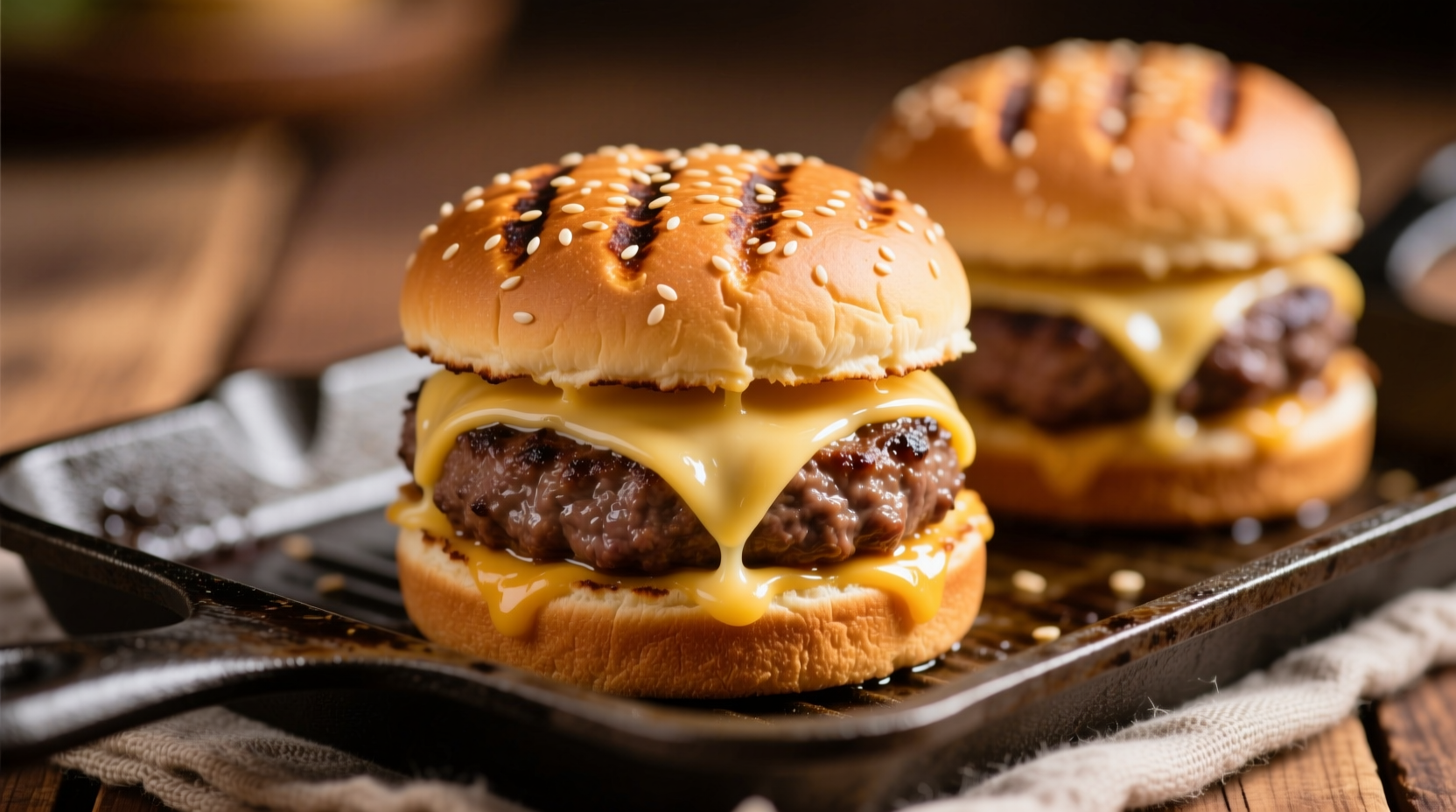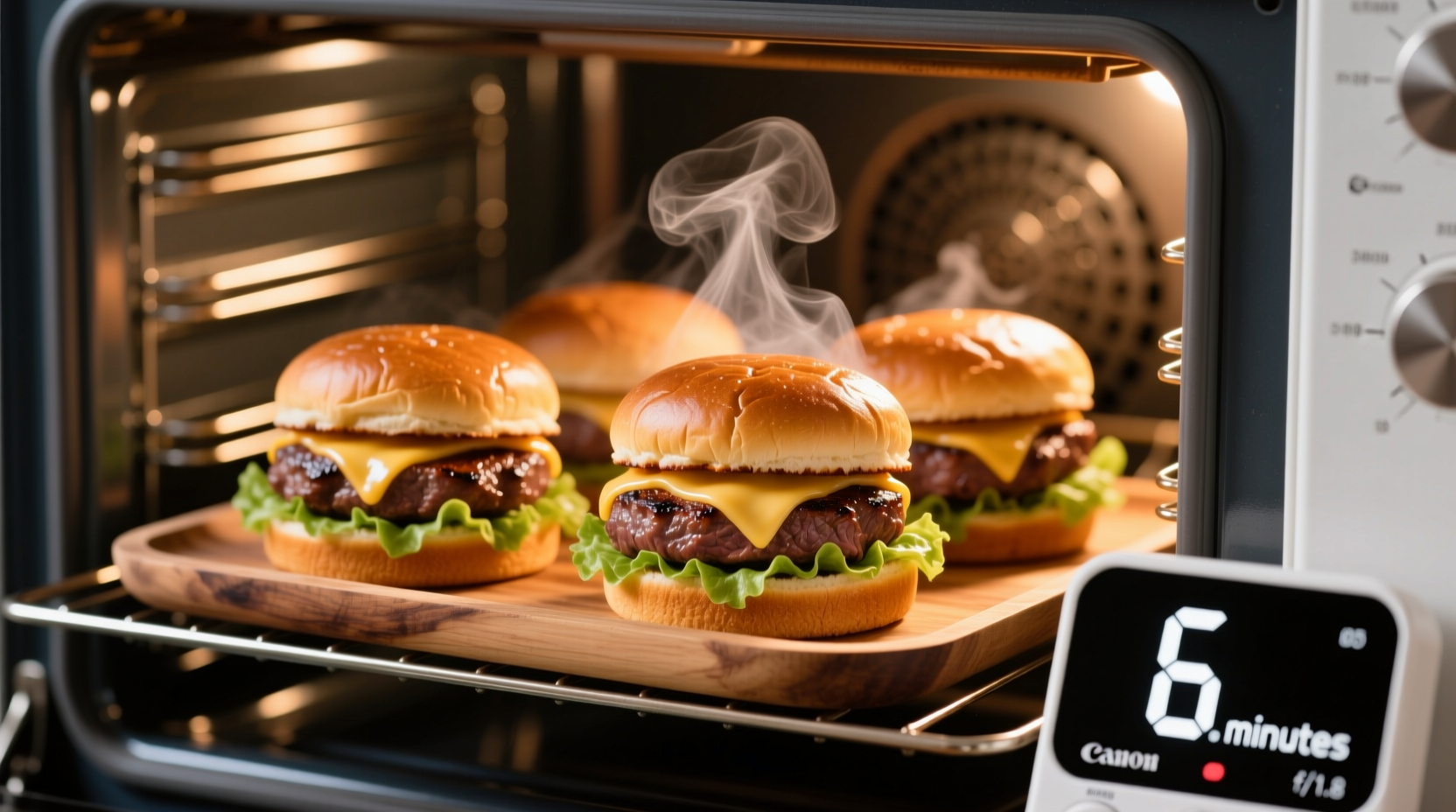Why Precise Slider Cooking Time Matters
Getting slider cooking time right transforms your meal from disappointing to delicious. Undercooked sliders risk foodborne illness, particularly with ground meats that require thorough heating. Overcooked sliders become dry, tough, and lose their signature juicy appeal. The perfect slider maintains moist filling while warming the bun just enough to develop light crispness without burning.
Your Complete Slider Cooking Formula
While 12-15 minutes at 350°F serves as the standard guideline, several factors influence the ideal cooking duration. This formula adapts to your specific situation:
| Slider Type | Recommended Time | Internal Temperature | Special Notes |
|---|---|---|---|
| Beef sliders (fresh) | 12-15 minutes | 160°F (71°C) | Check at 12 minutes to prevent drying |
| Chicken or turkey sliders | 14-17 minutes | 165°F (74°C) | Requires longer cooking for safety |
| Frozen sliders | 18-22 minutes | 165°F (74°C) | No need to thaw first |
| Cheese-topped sliders | 10-12 minutes + 2-3 broil | 160°F (71°C) | Add cheese during last minutes |
Critical Variables That Change Cooking Time
Your actual cooking time varies based on these often-overlooked factors:
Starting Temperature Matters More Than You Think
Sliders taken directly from the refrigerator require 2-4 extra minutes compared to room-temperature sliders. The USDA Food Safety and Inspection Service confirms that cold foods take longer to reach safe internal temperatures (USDA Leftovers Safety Guidelines). For best results, let refrigerated sliders sit at room temperature for 15-20 minutes before baking.
Oven Accuracy Creates Significant Variance
Most home ovens have temperature variations of up to 25°F. An oven thermometer (USDA FSIS Thermometer Recommendations) reveals your oven's actual temperature, preventing under or overcooking. If your oven runs hot, reduce cooking time by 1-2 minutes; if it runs cool, add 1-2 minutes.

Step-by-Step Slider Cooking Process
Preparation Checklist
- Preheat oven to 350°F (175°C) for at least 15 minutes
- Arrange sliders on baking sheet with space between them
- Lightly spray or brush buns with oil for better browning
- Prepare instant-read thermometer for checking
Cooking Timeline
- Place sliders in preheated oven on middle rack
- Set timer for 10 minutes (for room temperature sliders)
- Check internal temperature at 10 minutes
- Continue cooking in 1-minute increments until reaching safe temperature
- Remove when internal temperature hits 165°F (74°C) for poultry or 160°F (71°C) for beef
- Let rest 2-3 minutes before serving
Special Cases & Professional Adjustments
Frozen Slider Protocol
For frozen sliders, add 5-7 minutes to standard cooking time. America's Test Kitchen research shows that frozen sliders require approximately 20 minutes at 350°F to reach safe internal temperatures without drying out (America's Test Kitchen Frozen Foods Guide). Place frozen sliders directly in the oven - no thawing needed.
Cheese Topping Technique
Add cheese during the last 3-4 minutes of cooking. For melted perfection, broil for the final 1-2 minutes while watching closely to prevent burning. The cheese should be fully melted with slight bubbling at the edges.
Troubleshooting Common Slider Problems
Dry or Tough Sliders
This usually means overcooking. Reduce time by 2-3 minutes next time and always verify with a thermometer rather than relying solely on time. For already dry sliders, serve with extra sauce or gravy to restore moisture.
Uneven Cooking
Rotate the baking sheet halfway through cooking. If your oven has hot spots (common in older models), arrange sliders in a circular pattern rather than straight rows for more even heating.
Soggy Buns
Place sliders on a wire rack over the baking sheet to allow air circulation. Avoid covering sliders while cooking, as trapped steam softens the bun. For extra-crisp buns, lightly toast them for 3-4 minutes before adding the filling.
Pro Tips for Perfect Sliders Every Time
- Thermometer verification: Always use an instant-read thermometer - time alone isn't reliable
- Resting time: Let sliders rest 2-3 minutes after cooking for juicier results
- Oven positioning: Middle rack placement ensures even heating from all sides
- Bun protection: Wrap ends of sliders in foil if buns brown too quickly
- Batch cooking: Keep cooked sliders warm in a 200°F oven while finishing additional batches
When Standard Guidelines Don't Apply
These cooking times assume conventional ovens with standard baking sheets. Convection ovens typically require 25°F lower temperature and 2-3 minutes less cooking time. Mini ovens and toaster ovens often have uneven heating patterns requiring closer monitoring. Always adjust based on your specific equipment and verify with a thermometer.
How Slider Cooking Has Evolved
Slider cooking methods have changed significantly since the 1940s when the first slider recipes appeared. Early recipes recommended longer cooking times (18-22 minutes) due to less precise oven technology. Modern food safety standards established in the 1990s introduced specific internal temperature requirements that refined cooking times. Today's focus on precision cooking leverages instant-read thermometers and convection technology for more consistent results in less time.











 浙公网安备
33010002000092号
浙公网安备
33010002000092号 浙B2-20120091-4
浙B2-20120091-4